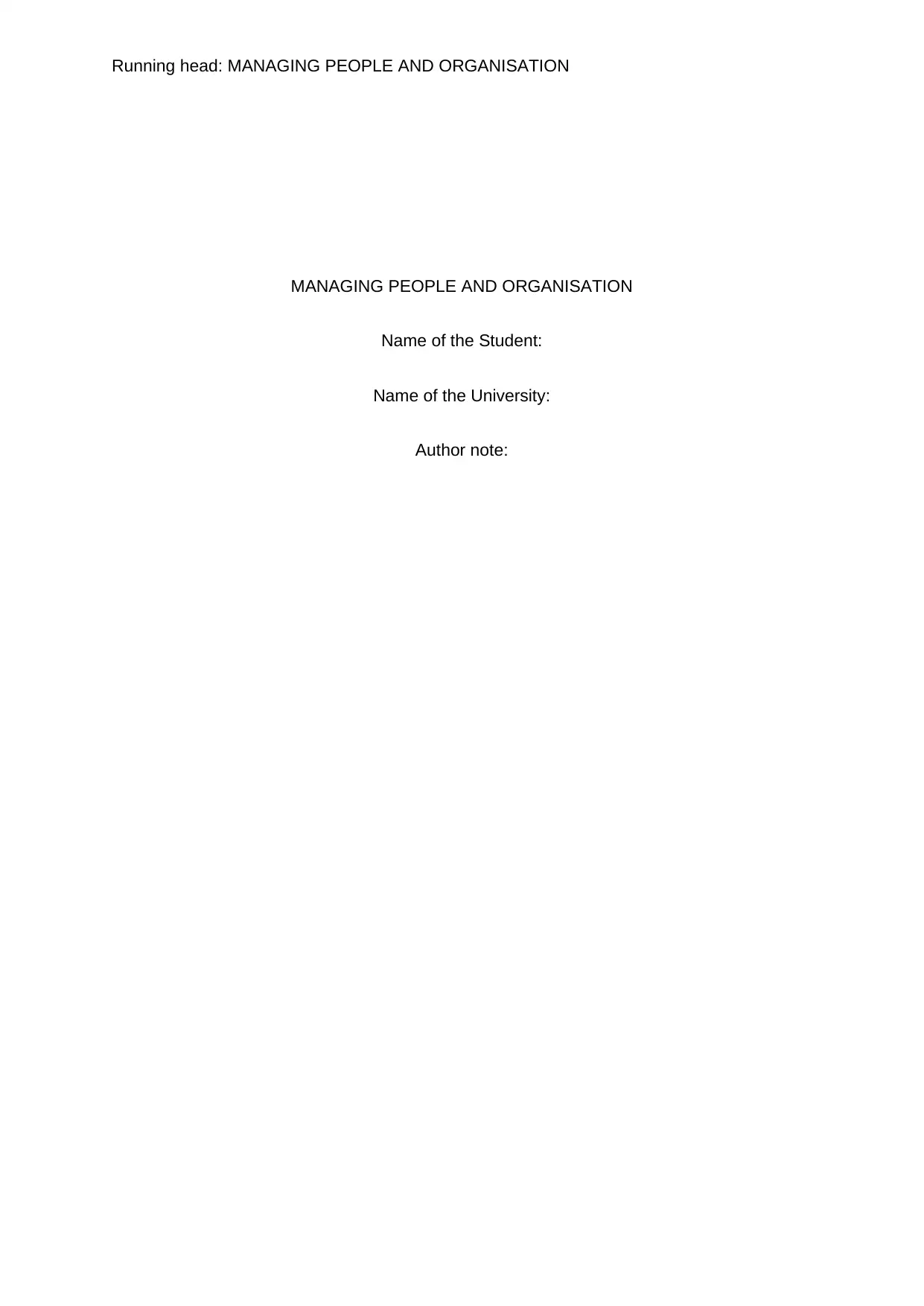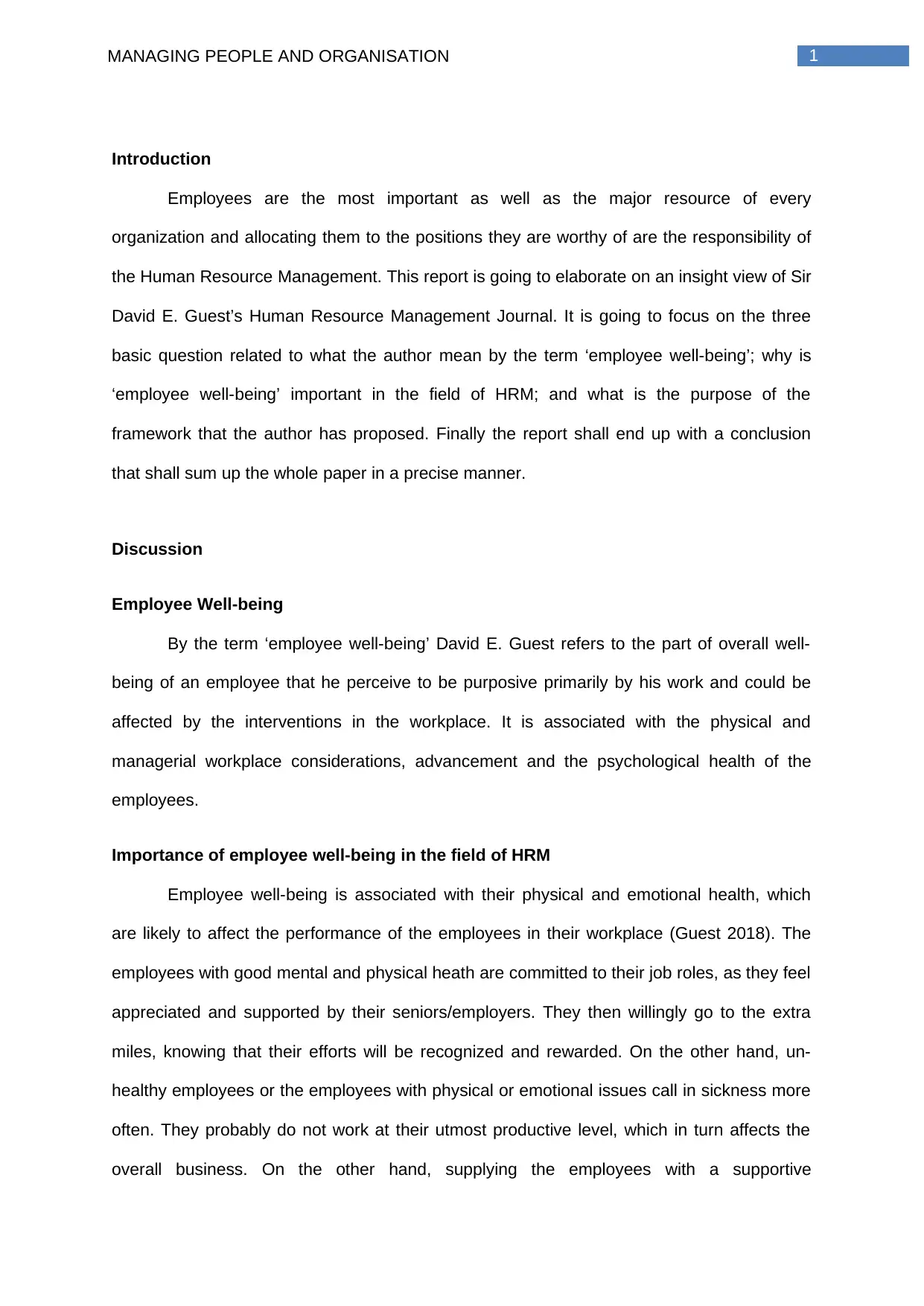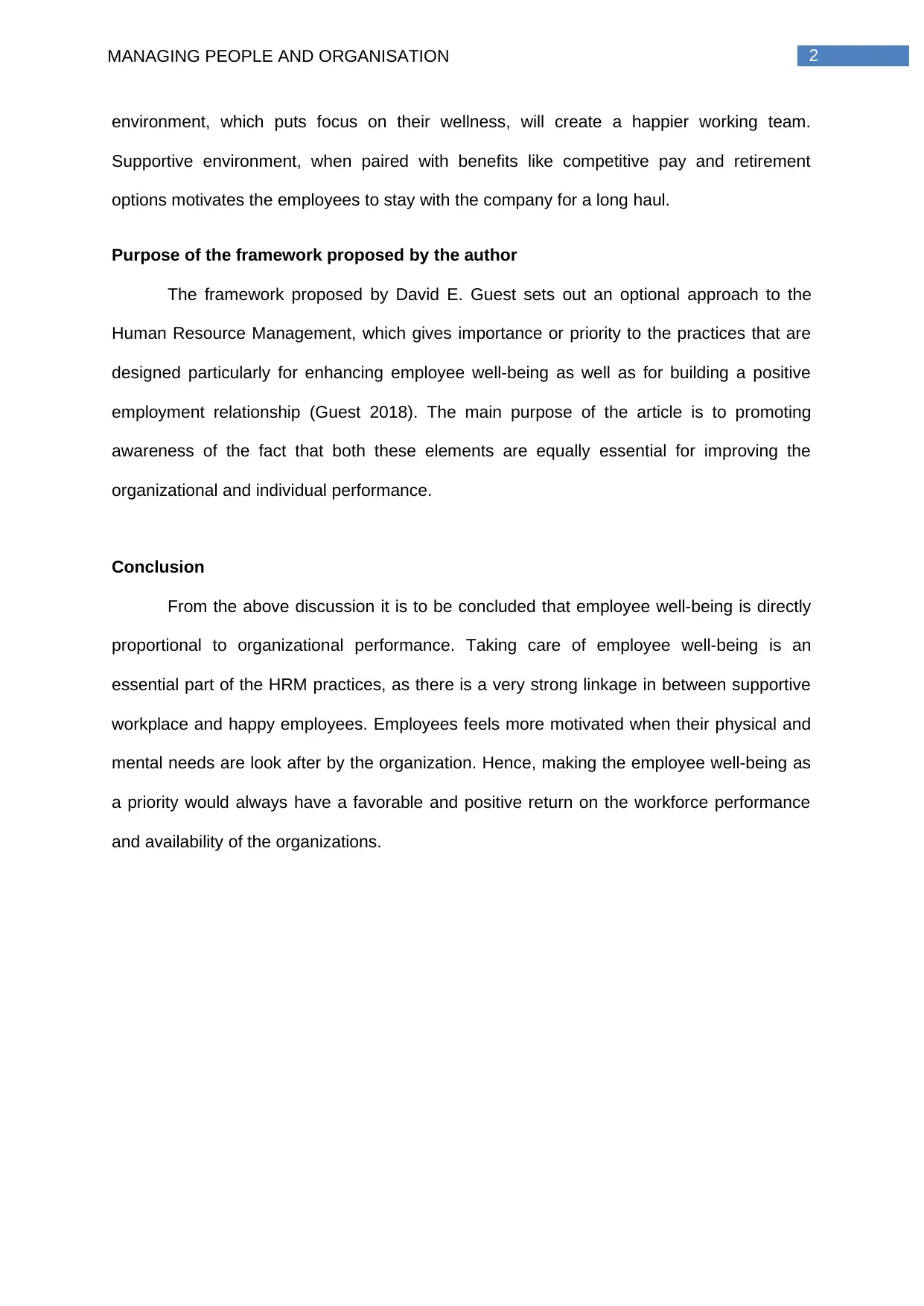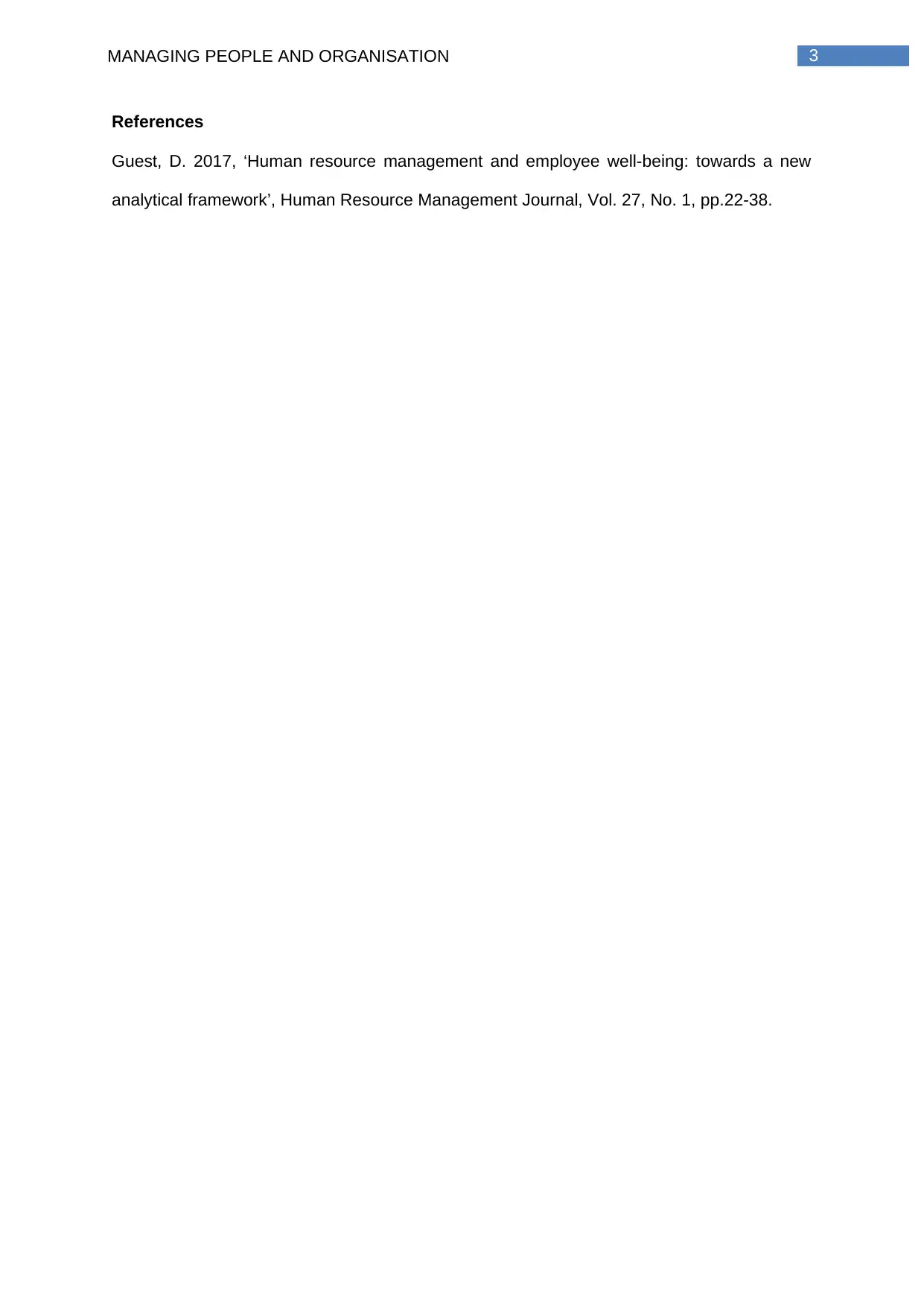HRM and Employee Well-being: Analyzing David E. Guest's Framework
VerifiedAdded on 2023/06/14
|4
|619
|301
Essay
AI Summary
This essay delves into David E. Guest's perspective on employee well-being within Human Resource Management, emphasizing its significance and impact on organizational performance. It explores Guest's definition of employee well-being, highlighting its connection to physical and psychological health, and discusses why it is crucial for HRM practices. The essay further examines the purpose of Guest's proposed framework, which aims to enhance employee well-being and foster positive employment relationships. Ultimately, the analysis concludes that prioritizing employee well-being is essential for improving workforce performance and organizational success, as supported by the strong correlation between a supportive work environment and employee motivation.
1 out of 4











![[object Object]](/_next/static/media/star-bottom.7253800d.svg)